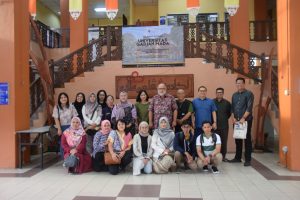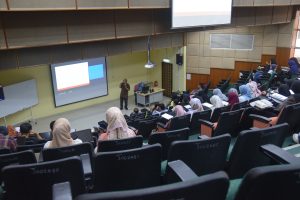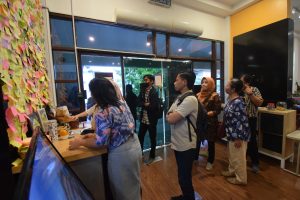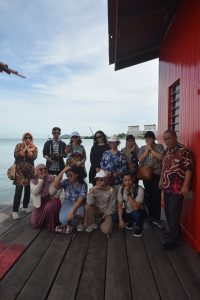Field Trip to Malaysia and Visiting Universiti Malaya and Universiti Sains Malaysia
“Tandas, yuk!” exclaimed the academic community of Media and Cultual Studies (KBM) at Universitas Gadjah Mada (UGM) at every stop during the postcolonial field trip to several tourist areas in Malaysia, from May 20 to 24, 2024. “Tandas” is the Malay word for toilet, a term most remembered by the KBM UGM academic community participating in this series of activities. Three lecturers, five master’s students, two doctoral students, and four educators from KBM UGM took part in this trip.

The field trip coincided with a benchmarking and networking (benchmarking) study between KBM UGM and the Faculty of Malay Studies Academy (APM) at the University of Malaya (UM), Kuala Lumpur, and the Anthropology and Sociology Study Program at the University of Science Malaysia (USM), Penang. The benchmarking and networking aimed to establish cooperation in the form of joint research, visiting lectures, joint seminars and colloquiums, and other forms of collaboration. At APM University of Malaya, the networking activity was part of a knowledge dissemination series in the form of a joint postcolonial seminar. In this joint seminar, KBM’s Head of Doctoral Program Dr. Budiawan presented the postcolonial condition that rendered the Moluccans as subaltern, while APM UM Lecturer Assoc. Prof. Dr. Awang Azman Pawi explained how the Malaysian government’s intervention resulted in positive discrimination for the indigenous people post-British colonialism. Two KBM students, Reni Juliani (doctoral program) and Akhmad Jauhari (master’s program), also had the opportunity to present their research alongside Nasrullah, a KBM alumnus currently pursuing doctoral studies at APM UM.

In addition to benchmarking and networking, the meeting between KBM UGM and APM UM and USM also included visits to campus facilities such as the Malay Studies Library and the Malay Ethnographic Museum at APM UM, as well as the Museum and Art Gallery, Student Co-working Space, and Student Cooperative at USM. The KBM UGM academic community was constantly immersed in admiration during each campus facility visit, especially the student co-working space, which also serves as a home for cats cared for on campus. “The co-working space really supports students’ mental health,” said Dr. Ratna Noviani, Head of the Master’s Program KBM UGM, while stroking a cat’s head.

Meanwhile, the field lectures complementing the KBM UGM visit to Malaysia served as an introduction to the traces of colonialism in the neighboring country. The first field lecture was held with APM UM in the city of Melaka, visiting the remnants of Portuguese colonialism, including the St. Paul’s Church built in 1521 and the A Famosa Fortress built in 1511. The second field lecture was conducted on Penang Island, visiting the remnants of British colonialism in Georgetown, such as the Victorian-style Town Hall and the neo-classical City Hall, located adjacent to the western side of the Strait of Malacca. Additionally, Penang Island’s location in the Strait of Malacca, a trade and shipping route since colonial times, has made it rich in cultural and religious diversity. Some of the diverse landmarks we visited included the oldest mosque in Penang, the Kapitan Keling Mosque founded by Indian Muslims; the oldest Anglican church in Southeast Asia, St. George’s Church, a British heritage site; the Sri Mariamman Temple in the Little India area; and Chew Jetty, a fishing village that once served as a refuge for Chinese clan jetties during the 18th-century war.

In addition to the postcolonial field lectures, the UGM academic community also visited the Camera Museum on Penang Island to explore traces of media theory. Here, the KBM academic community was allowed to try out cameras used during wartime, while reminiscing about the early era of mechanical reproduction in art, as described by Walter Benjamin. This journey on Penang Island was also the final part of the KBM UGM visit to Malaysia. “Hopefully, next we can visit and have field lectures in Korea,” concluded Elok Santi Jessica, a lecturer and Quality Assurance Coordinator of KBM UGM, jokingly.

(SDGs 4, SDGs 17)
Author: Asmi Nur Aisyah
Photos: Latif Nuryawan
